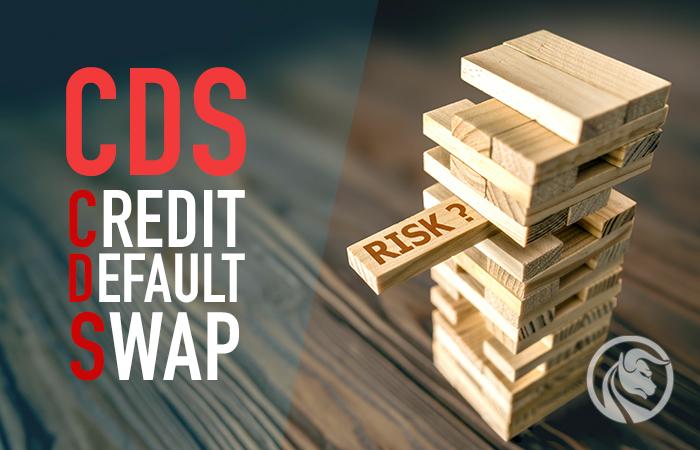What are Credit Default Swaps (CDS)?
Recent turmoil on the case Credit Suisse's problems restored interest in a synthetic instrument such as CDS. The name is short for Credit Default Swaps. It is a financial derivative that allows investors to hedge their credit risk. As with any derivative, there are two sides to a transaction: the buyer and the issuer. The buyer secures himself against the risk of the debt issuer's insolvency. He pays a "premium" for the said insurance, which can be compared to the insurance premium. The exhibitor assumes the risk of this insolvency of the borrower. For this exposure to credit risk, it demands the payment of a premium. In today's article, we will show you what exactly Credit Default Swaps is.
How does CDS work?
Credit Default Swaps are derivative instruments that transfer the credit risk of debt instruments between the parties to the contract. In practice, the CDS market reflects the market expectations as to the condition of debtors. Even the most reliable debtor is not able to guarantee that it will pay its liabilities on time. Thus, the uncertainty related to debt default is called credit risk. The longer the maturity date for the interest debt, the greater the risk of default. It is worth remembering that an unreliable debtor means a higher credit risk, therefore CDSs for Argentine debt are higher than for German ones. Sometimes, political risk also influences credit risk. For example, currently Ukrainian companies operating in eastern Ukraine have a greater risk of insolvency than their French counterparts.
If investors are concerned about the condition of a debt issuer, they buy this instrument in order to reduce the risk of the debtor's insolvency. The increase in demand for the derivative raises their prices. This, in turn, sends a signal that the risk of this debtor's insolvency is increasing. Of course, the mere increase in CDSs does not mean that the risk of default always increases. Some swaps are very illiquid and high spreads can cause the premium to spike.
Credit event
The credit event is the trigger that allows the CDS buyer to perform the contract and manage insurance payments. It is worth remembering that the types of credit events are agreed upon when creating the contract. Most Credit Default Swaps are traded with the following credit events:
- Missing payment - the issuer of the debt did not pay interest
- Debt restructuring - if the issuer restructures its debt
- Government intervention - e.g. nationalization of a company
- moratorium - suspension of debt repayment
- reputation - dispute over the validity of the contract
Contract performance
The contract can be performed physically or in cash. Currently, the cash method is much more popular. This means that the seller of the Credit Default Swap undertakes to cover the losses to the buyer of the CDS without the need for the swap holder to provide proof of ownership of the debt instrument. The development of the cash method is related to the fact that the instrument has ceased to function as a classic hedge, but has become a speculative tool. Physical execution means that the buyer of the CDS is obliged to deliver the bonds at the time of contract execution to receive payment.
The use of CDSs
The instrument plays a very important role in the global derivatives market. However, its original use has lost its relevance. Currently, the instrument has three uses:
- An instrument for speculation - this type of swap is traded on the world markets. It is natural that it has become a speculative instrument. Investors buy and sell swaps in order to profit from the price movement. The result is that sometimes a change in CDS does not mean that more investors want to hedge their exposure to the debt of a specific issuer. Sometimes it's just a speculative attack or a miscalculation by speculators.
- Hedging instrument - this is a classic application of this instrument. The CDS buyer wants to hedge against the risk of a credit event. The main buyers of these types of swaps are insurers or pension funds. The main reason is the desire to minimize the credit risk of the debt instruments held.
- Arbitration - sometimes the CDS can be an instrument that can be used as an arbitration tool. For example, an investor can buy bonds in one market and then buy CDS for the same bonds in another market. Sometimes such a strategy can generate risk-free profit when the bond and CDS are priced differently.
CDS during the subrime crisis
This instrument played one of the key roles during the credit crisis triggered by the US mortgage market. One of the largest Credit Default Swap issuers were companies such as AIG, Bear stearns and Lehman Brothers. These institutions offered protection against losses in the mortgage market that were securitized in MBS (Mortgage-Backed-Securities). Investors purchasing MBSs bundled with CDS had the illusory hopes that they had a "risk-free" instrument. However, the solvency of the swap issuers was a problem. If MBSs depreciated, CDS issuers were in a difficult position. Huge losses on these swaps, CDOs and other derivatives meant that central banks and governments of major economies had to save the financial system.
READ: Bubble is not bad - what can we learn from it?
Advantages of the CDS contract
Although Credit Default Swaps do not have a good reputation with many investors, they do have a number of advantages. These include:
- Risk reduction for the bond buyer - an investor can purchase a Credit Default Swap, which can be treated as a form of insurance against the risk of the bond issuer's default.
- A flexible instrument for speculating - you do not need to acquire debt to benefit from default protection. The instrument is therefore very convenient for speculators.
- Creditworthiness assessment tool - the instrument is used in many risk management models to determine how high the risk of bankruptcy of a given business entity is. Some credit rating agencies have used liquid CDSs in their credit rating models.
Disadvantages of CDS contracts
OTC market - CDSs are not traded on a regulated market. Most transactions are between financial institutions. This means that it is difficult to estimate the size of the market and which entities are involved in trading this financial instrument. It is possible that trading in the OTC market increases the risk of the stability of the global financial system.
- Instrument with asymmetric risk sharing - the issuer of this instrument has problems with finding an instrument that allows for an easy protection against the risk of the issuer's insolvency. This entails the necessity to pay a greater premium for the purchase of this type of instrument.
- Lulling debt buyers to vigilance - the instrument may create a false impression that the instrument protects against the risk of default. Due to the fact that the instrument operates on the OTC market and is based on faith in the issuer of this instrument, there is a counterparty risk. The collapse of a CDS issuer means that the collateral itself is of no greater value.






















![Forex Club – Tax 9 – Settle tax on a foreign broker [Download the Application] Forex Club - Tax 9](https://forexclub.pl/wp-content/uploads/2024/02/Forex-Club-Podatek-9-184x120.jpg?v=1709046278)
![Trading View platform – solutions tailored to the needs of traders [Review] trading view review](https://forexclub.pl/wp-content/uploads/2024/03/trading-view-recenzja-184x120.jpg?v=1709558918)
![How to connect your FP Markets account to the Trading View platform [Guide] fp markets trading view](https://forexclub.pl/wp-content/uploads/2024/02/fp-markets-trading-view-184x120.jpg?v=1708677291)
![How to invest in ChatGPT and AI? Stocks and ETFs [Guide] how to invest in chatgpt and artificial intelligence](https://forexclub.pl/wp-content/uploads/2023/02/jak-inwestowac-w-chatgpt-i-sztuczna-inteligencje-184x120.jpg?v=1676364263)


![WeWork – the anatomy of the collapse of a company valued at $47 billion [WeWork, part II] wework bankruptcy story](https://forexclub.pl/wp-content/uploads/2024/04/wework-bankructwo-historia-184x120.jpg?v=1711729561)
![Adam Neumann – the man who screwed up Softbank [WeWork, part AND] adam neumann wework](https://forexclub.pl/wp-content/uploads/2024/04/adam-neumann-wework-184x120.jpg?v=1711728724)





![How to transfer shares to another brokerage office [Procedure description] how to transfer shares to another brokerage house](https://forexclub.pl/wp-content/uploads/2024/03/jak-przeniesc-akcje-do-innego-biura-maklerskiego-184x120.jpg?v=1709556924)

![The most common mistakes of a beginner trader - Mr Yogi [VIDEO] Scalping - The most common mistakes of a beginner trader - VIDEO](https://forexclub.pl/wp-content/uploads/2024/03/Scalping-Najczestsze-bledy-poczatkujacego-tradera-VIDEO-184x120.jpg?v=1711601376)
![Learning patience: No position is also a position - Mr Yogi [VIDEO] Scalping - Learning patience - No position is also a position - VIDEO](https://forexclub.pl/wp-content/uploads/2024/03/Scalping-Nauka-cierpliwosci-Brak-pozycji-to-tez-pozycja-VIDEO-184x120.jpg?v=1710999249)
![When to exit a position and how to minimize losses - Mr Yogi [VIDEO] Scalping - When to exit a position and how to minimize losses - VIDEO](https://forexclub.pl/wp-content/uploads/2024/03/Scalping-Kiedy-wyjsc-z-pozycji-i-jak-minimalizowac-straty-VIDEO-184x120.jpg?v=1710336731)

















